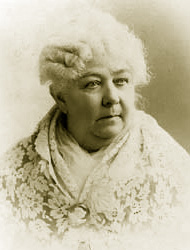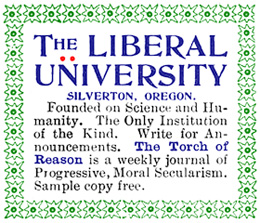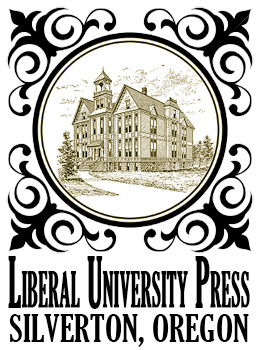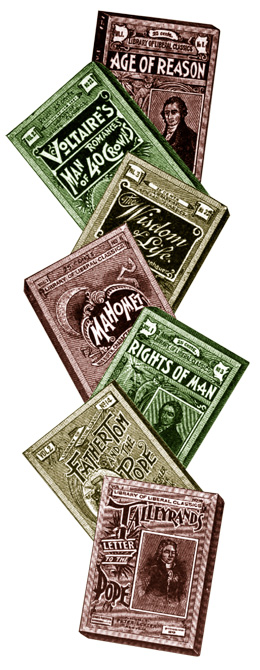By Elizabeth Cady Stanton — May, 1901
 Without going into any of the fine calculations of historians, as to the centuries of human growth, I would simply state that some agree on about 85,000 years. They assign 60,000 to savagery, 20,000 to barbarism, and 5,000 to civilization. For my present purpose, these facts are only interesting to show for how long a period, in proportion, women reigned supreme, the arbiters of their own destiny, the protectors of their children, the acknowledged builders of all there was of home life, religion, and, later, from time to time, of government.
Without going into any of the fine calculations of historians, as to the centuries of human growth, I would simply state that some agree on about 85,000 years. They assign 60,000 to savagery, 20,000 to barbarism, and 5,000 to civilization. For my present purpose, these facts are only interesting to show for how long a period, in proportion, women reigned supreme, the arbiters of their own destiny, the protectors of their children, the acknowledged builders of all there was of home life, religion, and, later, from time to time, of government.
All along from the beginning until the sixteenth century, when Luther eliminated the feminine element wholly from the Protestant religion, and brought the full power of the church to enforce woman’s complete subjection, we find traces of the matriarchate. Karl Pearson in a series of deeply interesting essays, gives us the result of his researches into the works of modern historians, and the startling facts they unearth from what, to most of us, is the dead, unknown, eternal past, shadowed in mystery. The publication of Das Mutterechl, by Bachofen in 1861, of Morgan’s Ancient Society in 1877, of Wilkeson’s, Ancient Egypt in 1836, with other lesser lights pursuing the same trend of investigation, all show the leading, independent position women held for ages.
What is often said, and repeated from time to time, and never contradicted, is accepted as truth. Thus the assertion that women have always been physically inferior to men, and consequently have always been held in a subject condition, has been universally believed. This view has furnished the opponents to woman’s emancipation their chief arguments for holding her in bondage, and logically so, for if at all periods, and in all latitudes and longitudes, woman had held the same subordinate position, men would naturally infer that what we choose to call Providence, for wise purposes, had made woman the slave of man.
The worst feature of these assumptions is that women themselves believe them, and feel that to strive for their own emancipation is simply an attempt at the impossible. Fortunately historical research has at last proved the fallacy of these assumptions, and all the arguments that grow out of them mankind may be traced by a chain of necessary inferences, back to a time when ignorant of fire, without articulate language, without artificial weapons, they depended like the wild animals upon the spontaneous fruits of the earth. Through all this period woman was left to protect herself and forage for her children.
Morgan, in his “Ancient Society,” gives many remarkable examples of the superior position of woman among different tribes in the latter part of the period of barbarism. Among the greater number of the American aborigines the descent of property and children were in the female line. Women sat in the councils of war and peace and their opinion’s had equal weight on all questions.
Among the Winnebagoes, that occupied the territory now known as Wisconsin, a woman was at the head of the nation. The same was true among the early tribes or gens in the Eastern Hemisphere. In the councils of the Iroquois gens, every adult male or female member had a voice upon all questions brought before it. It elected and deposed its sachem or chief; it elected keepers of the Faith; it condoned or avenged the murder of a gentilis, and it adopted persons into the gens.
At the epoch of European discovery the American Indian tribes generally were organized into gentes, with descent in the female line. Before paterfamilias was known, the family was nowhere considered a unit around which society centered. Nothing whatever was based on the family in any of its forms, because it was incapable of entering a gens as a whole. The gens were homogeneous and to a great extent permanent in duration, and as such the natural basis of a social system.
A family of the monogamic type might have individualized and become powerful in society at large, but the gens did not and could not recognize the family as an integer of itself. This is equally true of the modern family and political society. Although individualized by property rights and privileges, and recognized as a legal entity by statutory enactments, the family is not the unit of the political system.
The state recognizes the counties, of which it is composed, the county its townships, but the townships take no note of the family. So in the early periods the nation recognized its tribes, the tribes its phratries, and the phratries its gentes; but the gens took no note of the family. Thus Morgan flatly contradicts modern historians who assert that the social system of the early Greeks “was the home, the hearth, or family.”
Like our modern opponents, they cling to the idea of “the family unit,” because on that is based the absolute power of the father over the property, children, and the civil and political rights of wives. It is worthy of note that our barbarian ancestors seem to have had a higher idea of justice to woman than American men in the nineteenth century, professing to believe, as they do, in our republican principles of government.
During these early periods the property of woman was in her own line and gens, and man’s property was in his own line and gens. The following case at the Pueblo of Oraybe shows that the husband acquires no rights over the property of the wife, or over the children of the marriage. A Zumian married an Oraybe woman, and had by her three children. He resided with them at Oraybe until his wife died, when the relatives of the deceased wife took possession of her children and her household property; leaving to him his clothing, horse, and weapons. As was the custom, he returned to his own people at Zuni.
A similar case occurred at another of the Moqui Pueblos. A woman died, leaving property, children, and husband. The deceased wife’s relatives took the property and children, and all the husband was allowed to take was his own clothing, with the privilege of going whithersoever he desired. From these cases it appeared the children belong to the mother, not to the father, and that he was not allowed to take them, even after the mother’s death.
Such, also, was the usage among the Iroquois and other Northern tribes, and among the village Indians of Mexico. The growth of the idea of property, and the rise of monogamy, which in a measure assured the paternity of children, formed motives sufficiently powerful to bring children into the gens of their father, and a participation in the inheritance of his estate. But this invasion of the mother’s rights was a slow process and for long periods resisted.
Mr. Morgan shows, too, that the early tribes in Greece, like the American aborigines, were essentially democratic in their government. Historians, accustomed to monarchical governments, would naturally interpret words and actions in harmony with their ideas. Thus Mr. Grote has a memorable dictum of Ulysses in the Iliad to prove that the Greeks had a one-man government: “The rule of the many is not a good thing; let us have one ruler only-one king-him to whom Zeus has given the scepter with the tutelary sanction.” But this saying has no significance as applied to government. Ulysses, from whose address the quotation is taken, was speaking of the command of an army before a besieged city. There was no occasion for Ulysses to discuss or indorse any plan of government; but he had sufficient reason for advocating obedience to a single commander of the army before a besieged city.
As thus we have seen that Grote, in his history of Greece writing from his own true inwardness, mistook the spirit of the times of which he wrote, it behooves us women to question all historians, sacred and profane, who teach by examples or precepts any philosophy that lowers the status of the mothers of the race, or favors the one-man power in government. As far back into the shadowy past as human thought has penetrated, and been able by a process of reason to substantiate the facts of primeval life, we behold woman in all her native dignity, self-poised and self-supporting, her own head and hands her guidance and protection. The instincts of motherhood gave her the first thought of privacy and seclusion, and led her to make a home for herself and children in the caves of the earth, safe from the wild beasts of the forest and the wily hunter, who slept on the ground, wherever night found him, and lived on uncooked food, while his rude activities developed but few of his faculties, the woman, in solitude, was learning the great lessons of life.
A new birth! What a mystery for her to ponder! What love and tenderness helpless infancy calls out! What intelligence and activity its necessities compel: what forethought and responsibility in providing for herself and children it involves. Sex-relations, being transitory and promiscuous, the idea of fatherhood was unknown; as men naturally have no sense of paternal responsibility, no one knew or cared about the father of a child. To know one’s own mother was deemed all-sufficient for a legitimate name and an abiding place.
The period of woman’s supremacy lasted through many centuries, undisputed, accepted as natural and proper wherever it existed, and was called the matriarchate, or mother-age. It was plainly traceable among the Aryans, the Germans, the Persians, and indications of it are still seen among uncivilized tribes and nations.
Careful historians now show that the greatest civilizing power all along the pathway of natural development has been found in the wisdom and tender sentiments growing out of motherhood. For the protection of herself and children woman made the first home in the caves of the earth; then huts with trees in the sunshine. She made the first attempts at agriculture; raised grain, fruits, and herbs, which she learned to use in sickness. She was her own physician; all that was known of the medical art was in her hands. She domesticated the cow and the goat, and from the necessities of her children learned the use of milk. The woman cultivated the arts of peace, and the sentiments of kinship, and a home life. The necessities of motherhood were the real source of all the earliest attempts at civilization.
Thus, instead of being a “disability,” as unthinking writers are pleased to call it, maternity has been the all-inspiring motive or force that impelled the first steps toward a stable home and family life. Clearly the birth of civilization must be sought in the attempt of woman at self-preservation during the period of pregnancy and lactation.
What man achieved at that period was due to the contest for food with his fellows and the wild beasts. He simply invented and improved weapons of warfare; but the woman, handicapped as she appeared to be by child-bearing, became on this very account the main factor in human progress. The man’s contributions at this early period are nothing as compared to woman’s. Her varied responsibilities as mother, bread-winner, protector, defender of a group of helpless children, raised her to intellectual and inventive supremacy, and made her the teacher and ruler of man.
Perhaps more interesting for us to-day is the actual existence of the matriarchate in the north of Africa among the Touaregs. “The matrix dyes the child,” is one of their proverbs. The child belongs to the mother and not to the father; it is the blood of the mother, and not that of the father, which confers on the child the rank he is to take. Formerly, when there was a question of territorial distribution, the lands granted to each family were inscribed in the name of the mother. The Berber law gives to women the administration of their property; at that they alone dispose of houses, gardens in a word, of all the landed property in the country. Among the Touaregs, not only is woman held as the equal of man, but she enjoys a preferable condition. She disposes of her hand, and in the conjugal community she administers her own fortune, without being forced to contribute to the expenses of the household.
Thus, it happens that, as productions accumulate, the greater part of the wealth is in the hands oi the women. “The Targui (which is the adjective for Touareg) woman is monogamous; she has imposed monogamy on her husband, although the Mussulman law permits him several wives. She is independent in regard to her husband, whom she can repudiate on the slightest pretext; she comes and goes freely. These social customs have produced extraordinary developments in the Targui woman. Her intelligence and initiative spirit are astonishing in the midst of a Mussulman society. She excels in bodily exercises; on the back of a dromedary she travels a hundred kilometers to attend a soiree; she competes in races with the boldest cavaliers of the desert. She is distinguished by intellectual culture.





